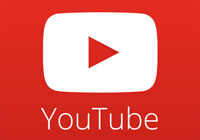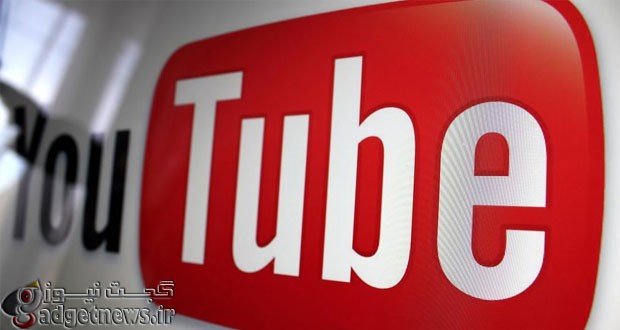بدون هیچگونه تردیدی ، یوتیوب بهترین و قدرتمند ترین سرویس ویدیویی آنلاین در جهان است که همه روزه میزبان میلیون ها بازدید کننده می باشد.اما باورش بیسار سخت است که می شنویم ، یوتیوب هیچ سودی برای گوگل ندارد!
بر اساس گزارشی که از سوی «وال استریت ژورنال» منتشر شده، این غول ویدیویی دنیا با وجود درآمدی 4 میلیارد دلاری، هیچ درآمدی برای شرکت گوگل ندارد !
 یوتیوب در مجموع تنها 6 درصد از فروش تبلیغات گوگل را تشکیل میدهد که با توجه به حضور همه جانبه ویدیوها و لینکهای این وبسایت در سراسر دنیای وب، آماری غافلگیرکننده به شمار میرود. اما شاید مشکل یوتیوب نیز همین واقعیت باشد.
یوتیوب در مجموع تنها 6 درصد از فروش تبلیغات گوگل را تشکیل میدهد که با توجه به حضور همه جانبه ویدیوها و لینکهای این وبسایت در سراسر دنیای وب، آماری غافلگیرکننده به شمار میرود. اما شاید مشکل یوتیوب نیز همین واقعیت باشد.
بر اساس تحقیقات، بیشتر مردم از طریق لینکهای به اشتراک گذاشته و ویدیوهای اصطلاحا جاسازی شده (Embedded) در وبسایتهای متفرقه به محتوای یوتیوب دسترسی دارند؛ بر خلاف فیس بوک و توییتر که همه به شکل مستقیم با آن درگیر هستند. یوتیوب تبلیغات را تنها در ویدیوهایی پخش میکند که از طریق وبسایت اصلی آن و مراجعه به صفحه خانگی (Home Page) یوتیوب مشاهده شده باشند.
یکی دیگر از مشکلات یوتیوب عدم نفوذ گسترده آن در میان کاربران است. وال استریت ژورنال میگوید که بر اساس یک تحقیق تنها 9 درصد از کاربران توتیوب حدود 85 درصد از کل نمایشهای ویدیوی یوتیوب را تشکیل میدهند. بدین ترتیب بیشتر کاربران این وبسایت به شکل “گهگاه” به این وبسایت سر میزنند. در عین حال بیشتر کاربران ثابت یوتیوب نیز نوجوانان هستند.
بدین ترتیب تبلیغ کنندگان علاقه چندانی به تبلیغ در یوتیوب نشان نمیدهند و تلویزیون و رقبای یوتیوب را به عنوان مکان بهتری برای تبلیغات میدانند.
گوگل از سال اخیر تلاش بسیاری برای زنده کردن این سرویس انجام داده است. در قدم نخست تلاش کرد که از جداشدن تولیدکنندگان محتوای خود جلوگیری به عمل آورد و سرمایه گذاری هنگفتی نیز در تولید محتوای اریجینال دارد.
همچنین یوتیوب سرویس جدید موسیقی خود را راه اندازی کرده که اگرچه فعلا در حالت رایگان قرار دارد، اما از چند ماه دیگر پولی میشود. کاربران مشترک از مزایایی چون عدم وجود تبلیغات در ویدیوهای یوتیوب بهره خواهند برد، در حالی که کاربران غیراشتراکی همچنان تبلیغات را در ویدیوهای این سرویس خواهند داشت.
از سوی دیگر، رقبای یوتیوب هم دندان تیزشان را برای آن نشان میدهند. فیس بوک -که سودی 3 میلیارد دلاری را برای سال 2014 ثبت کرد- و توییتر در حال طراحی و تکمیل سرویسهای ویدیوی اختصاصی خود هستند. همچنین استارتاپ هایی چون Vessel نیز ثابت کردهاند که سوددهی آنها برای تولیدکنندگان محتوا بهتر از یوتیوب است.
البته که تمام این موارد به معنای حذف یوتیوب در یک شب نخواهد بود؛ اما اگر یوتیوب دیر وارد عمل شود و نتواند سوددهی مناسبی داشته باشد و همچنین در رضایتمندی تولیدکنندگان محتوای اریجینال کمکاری کند، ممکن است که شاهد تغییراتی در سهم بازار آن باشیم.
منبع : Wsj
YouTube: 1 Billion Viewers, No Profit
YouTube: 1 Billion Viewers, No Profit
Google Inc. nurtured YouTube into a cultural phenomenon, attracting more than one billion users each month. Still, YouTube hasn’t become a profitable business.
The online-video unit posted revenue of about $4 billion in 2014, up from $3 billion a year earlier, according to two people familiar with its financials, as advertiser-friendly moves enticed some big brands to spend more. But while YouTube accounted for about 6% of Google’s overall sales last year, it didn’t contribute to earnings. After paying for content, and the equipment to deliver speedy videos, YouTube’s bottom line is “roughly break-even,” according to a person with knowledge of the figure.
By comparison, Facebook Inc. generated more than $12 billion in revenue, and nearly $3 billion in profit, from its 1.3 billion users last year.
The results reflect YouTube’s struggles to expand its core audience beyond teens and tweens. Most YouTube users treat the site as a video repository to be accessed from links or embedded video players posted elsewhere, rather than visiting YouTube.com daily. Google executives want them to turn on YouTube the way they turn on television, as a habit, where they can expect to find different “channels” of entertainment.
That is a problem still facing veteran Google executive Susan Wojcicki as she begins her second year running YouTube, one that could be tougher to solve if declining profit margins for Google overall limit her ability to invest in new content and services.
New challengers also add urgency to her task. Facebook and Twitter Inc., which routinely send traffic to YouTube, are building their own video offerings. Facebook, and startups such as Vessel, are trying to poach YouTube stars. Meanwhile, Amazon.com Inc. and Netflix Inc. are changing the image of “online video” by licensing Hollywood-produced content and creating original programming.“There’s a lot of junk” on YouTube, says Pivotal Research analyst Brian Weiser. “If they want meaningful TV budgets, they need to invest in TV content.”
Robert Kyncl, YouTube’s head of business and content operations, says online video is on the cusp of a growth spurt, much like cable television 30 years ago. He says it makes more sense for YouTube to invest in “Internet native creators,” rather than traditional TV shows.
Google bought YouTube in 2006 for $1.65 billion, but generated little revenue in the early years. Revenue accelerated in part due to skippable ads YouTube introduced in 2010. Viewers like them because they can skip ads they don’t want to watch; advertisers like them because they pay only when viewers do watch.
Past efforts to make YouTube more of a regular destination bore little fruit. In 2012, YouTube paid hundreds of millions of dollars to content producers, an early effort to create television-like channels. YouTube also redesigned its home page and tweaked algorithms that promote videos to encourage more frequent visits.
But many of those channels failed. An executive tasked with improving search to help users find YouTube videos departed earlier this month, just a few months after Ms. Wojcicki recruited him. People close to YouTube say the site still struggles to attract users directly, rather than via links.
One reason is that it caters to a narrow audience of young viewers. Music videos are its most popular content. YouTube’s stars remain relatively unknown. Felix “PewDiePie” Kjellberg is the biggest star, with 35 million subscribers to his wacky videogame montages. Even Ms. Wojcicki hadn’t heard of him before joining YouTube, she told a conference last fall.
To be sure, some advertisers covet these devoted fans. Josh Jacobs, chief executive of Accuen, the programmatic-advertising arm of Omnicom Group Inc., says ad buyers want to reach young fans as they build brand “affinities.”
But the narrow audience means advertisers typically reach far fewer people than via television, says Pivotal’s Mr. Weiser. He estimates that 9% of viewers account for 85% of online-video views.
In January, YouTube moved to broaden its audience by securing rights to National Football League game clips, interviews and more. The deal followed a similar Facebook deal with the NFL in December. It is also featuring episodes of “Sesame Street” and “Thomas the Tank Engine” for a new app for children.
Otherwise, YouTube has mostly focused on investments in “originals” produced by its homegrown stars; it is paying some of them bonuses not to jump ship to rivals.
Other steps to boost viewership include playing more videos automatically, as they do on Facebook, Instagram and Twitter’s Vine. The “autoplay” feature is expected to roll out shortly, say two people familiar with the matter.
Beyond broadening the audience, Ms. Wojcicki is also under pressure to boost sales, as growth slows at Google’s core-search advertising business.
Last year YouTube gave advertisers the ability to reserve spots next to popular videos, such as those from PewDiePie and comedian Jenna Marbles, separate from the hundreds of hours uploaded to the site every minute. In late 2013, YouTube agreed to let advertisers use Nielsen technology, instead of YouTube’s, to measure who sees their ads.
OMD, the media-buying unit of Omnicom, increased spending with YouTube “exponentially” in 2014 as a result, said Ben Winkler, chief digital officer.
At the same time, YouTube is moving to develop subscription services. In November, YouTube announced a music-subscription service, similar to Spotify, that will offer ad-free listening and other tools for $10 a month. YouTube executives have discussed another subscription offering for non-music content, according to one industry official, which would be in addition to its existing ad-supported service.
If those services succeed, they would provide a steady revenue stream that could help support investments in higher-quality programming.
YouTube executives also are considering a plan to tap Google’s data to target ads more effectively, according to two people briefed on the plans.
Today, YouTube relies on tracking cookies deployed on users’ computers by Google’s DoubleClick unit, which builds user profiles based on the non-Google websites they visit. Using the data Google captures from its own sites, including users’ search history, could prove more effective.
For example, someone researching vacation plans via Google search might see commercials for Caribbean getaways on YouTube.
Today, YouTube advertisers are left to guess who is planning a vacation based on other travel websites that DoubleClick has spotted them visiting.
The new ad-targeting system could arrive this year, say the people familiar with it, though one cautions that the system is complicated and might be difficult to roll out.
 گجت نیوز آخرین اخبار تکنولوژی، علم و خودرو
گجت نیوز آخرین اخبار تکنولوژی، علم و خودرو 






